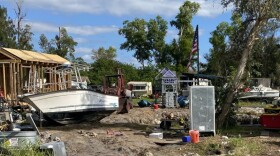The National Hurricane Center has released its official forecast for the 2025 Atlantic hurricane season. It calls for above-average activity, between 13 and 19 named tropical systems, of which 6 to 10 could become hurricanes, and from these, between 3 and 5 could become major hurricanes. An average season consists of 14 named systems, seven hurricanes, and three major hurricanes.
The key factors for this forecast are ENSO neutral conditions and warm tropical Atlantic waters. Experts and researchers focus on years during which atmospheric conditions were similar. Colorado State University´s Dr. Phil Klotzbach's 2025 hurricane season forecast, released in April, explained that this season could compare to the 1996, 1999, 2006, 2008, 2011, and 2017 seasons. It is essential to know that this comparison does not state landfall storms, just how similar the atmospheric conditions were in those years and in 2025.
Ken Graham, director of the United States National Weather Service, stated that 460 miles was the average error in a three-day track in 2005; today, this is down to 200 miles. Forecasts have improved significantly in the past decade thanks to the hard work of scientists and model improvements over the previous decade.

What is ENSO neutral?
Neutral conditions are when sea surface water temperatures are close to average. But this also means global weather patterns tend to be less predictable than during El Niño or La Niña.

El Niño southern oscillation could be positive, negative, or neutral. A positive trend is called El Niño. This is when surface water temperatures over the Pacific are warmer than average. It is measured over a few months and has particular parameters and areas, but it has global implications. When El Niño is present, there tends to be more vertical wind shear over the Atlantic, limiting the development of tropical systems.

A negative trend is called La Niña. This is when Pacific water temperatures are cooler than average, and over the Atlantic, causes the vertical wind shear to diminish, creating more conducive conditions for tropical systems to develop. If there is little wind shear over a low-pressure system growing, the system has nothing to "chop off" the top layer of its structural growth from there. If we add the fuel (the warm ocean temperatures), then a storm is free to intensify. There are more ingredients for a tropical system to form, but these are the main ones that signal if a season is busy.
Atlantic tropical surface water temperatures are also a significant factor in determining whether conditions are more prone to tropical systems developing. This year, although still warm and warmer than usual for this time of year, water temperatures are not at record levels. But they do remain warm. Warm water is fuel for tropical systems, feeding their growth and strengthening them.


Climate change, especially warmer ocean waters, is leading to rapid storm intensification. Everyone should keep this in mind and consider it closely, especially as a storm gets closer to land. If a system intensifies rapidly just before making landfall, impacts could quickly become more dangerous, leaving less time for preparations and evacuations. These hurricanes tend to bring the most devastation to coastal communities.

It is impossible to know if or how many storms could make landfall at this point. To know this, there needs to be a system, either close to land or developed with a well-defined center of circulation.
Get ready for the season regardless of the seasonal forecast: It only takes one storm to make it a busy season!
There are plenty of actions you can take now to prepare for the season ahead.
- Have a plan
- Know if you live in an evacuation zone
- Gather important documents
- Revise your insurance policy beforehand to ensure you are covered and up-to-date with the latest changes.
For more information about ways you can prepare for the season, go to Floridadisaster.gov







